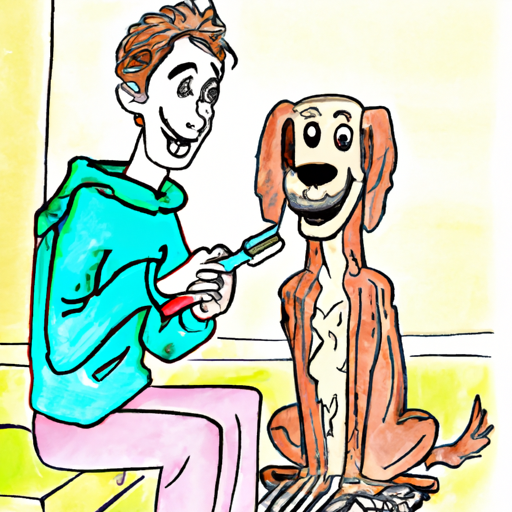Why Brushing Your Dog’s Teeth is Essential
Brushing your dog’s teeth may not be an activity you have ever considered. Yet, just like humans, dogs can suffer from dental issues such as gingivitis, periodontal disease, and tooth decay. These conditions can be painful for your furry friend and may lead to more serious health complications if left untreated. By brushing your dog’s teeth regularly, you can prevent these problems and keep your pet’s mouth healthy.
When and How Often to Brush Your Dog’s Teeth
Ideally, you should aim to brush your dog’s teeth daily, just as you would your own. However, if that’s not feasible, even a few times a week can make a substantial difference.
Here’s a simple schedule you can follow:
- Daily: Brush your dog’s teeth
- Monthly: Check for any changes in your dog’s mouth
- Annually: Schedule a professional cleaning with your vet
Choosing the Right Tools for Brushing Your Dog’s Teeth
When it comes to brushing your dog’s teeth, not just any toothbrush or toothpaste will do. Human toothpaste can be harmful to dogs, so it’s crucial to use a toothpaste specifically designed for dogs.
| Product | Description |
|---|---|
| Dog Toothpaste | Comes in various flavors like poultry or beef to appeal to dogs |
| Dog Toothbrush | Designed to fit in a dog’s mouth and clean their teeth effectively |
Toothbrushes designed for dogs usually have softer bristles and a different shape to better fit into a dog’s mouth. Some people find that a finger brush is easier to handle.
The Process: Step-by-Step Guide to Brushing Your Dog’s Teeth
The process of brushing your dog’s teeth might seem daunting, but with patience and consistency, it can become a routine that you and your dog get used to.
- Get Comfortable: Make sure both you and your dog are in a comfortable position.
- Apply Toothpaste: Apply a small amount of dog toothpaste to the toothbrush.
- Brush Gently: Lift your dog’s upper lip and begin to brush in a circular motion. Be sure to reach the back upper molars and canines, as these teeth tend to quickly build up tartar.
Remember, the goal is to create a positive experience for your dog. So, be patient, take it slowly, and make sure to reward your dog afterward with their favorite treat.
Troubleshooting Common Problems
While brushing your dog’s teeth is beneficial, it’s not always straightforward. Here are a few common problems you may encounter and tips on how to address them:
-
Your dog resists having their teeth brushed: Start slowly and use plenty of positive reinforcement. You might begin by simply letting your dog taste the toothpaste.
-
Your dog keeps moving around: Try brushing at a time when your dog is naturally calm and relaxed, like after exercise.
-
Your dog has bad breath despite regular brushing: Bad breath can be a sign of dental disease. If your dog’s breath doesn’t improve with regular brushing, it’s time to consult a vet.
FAQ Section
Q: How often should I replace my dog’s toothbrush?
A: Every three to six months, or when the bristles start to show wear.
Q: Can I use human toothpaste for my dog?
A: No. Human toothpaste can be harmful to dogs. Always use a toothpaste made for dogs.
Q: My dog hates having their teeth brushed. What can I do?
A: Be patient and start slow. Use positive reinforcement like treats and praise to create a positive association with tooth brushing.



